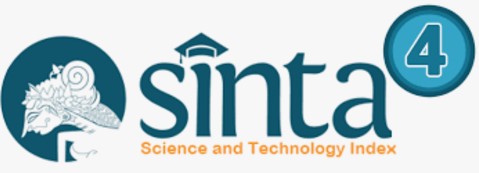FAKTOR-FAKTOR YANG MEMPENGARUHI PENGGUNAAN FASILITAS E-FILLING DALAM PENYAMPAIAN SPT MASA OLEH WAJIB PAJAK DI KOTA BENGKULU
DOI:
https://doi.org/10.36085/jam-ekis.v3i1.519Abstract
The title of this study is the factors that influence the use of e-filling tax facilities by taxpayers as a means of submitting effectively and efficiently annual notice (SPT) in Pratama tax service office of Bengkulu city. In the use of e-filling facilities, not all taxpayers use it for various reasons. This study aims to find out the empirical evidence of the influence of perception of usefulness (X1), perception of easiness (X2), complexity (X3), security and confidentiality (X4), taxpayer information technology readiness (X5), and counseling to taxpayers (X6) toward the intensity of behavior in the use of e-filling (y) in the Pratama tax service office of Bengkulu city. In this study, the samples taken were 100 taxpayers registered in the Pratama tax service office of Bengkulu City. Data collection is done through direct observation and surveys, and the data were obtained by distributing questionnaires to the respondents. This study uses Technology Acceptance Models (TAM) with the SPSS program. The results showed that the perception of usefulness (X1) had a significant positive influence on the intensity of behavior for the use of e-filling. Easiness perception (X2) had a positive significant influence on the intensity of behavior for the use of e-filling, Complexity (X3) had significant negative influence on the intensity of behavior for e-filling, security and confidentiality (X4) had significant positive influence on the intensity of behavior for filling the e-filling, taxpayer information technology readiness (X5) had a significant positive influence on the intensity of behavior for filling the e-filling, and counseling to taxpayers (X6) had a significant positive influence on the intensity of behavior for filling the e-filling.
Â
Keywords: Perception of Usability, Perception of Convenience, Complexity, Security and Confidentiality, Taxpayer Information Technology Readiness and counseling to Taxpayers on Behavioral Intensity in the Use of E-Filling.
References
Arikunto, Suharsimi. 2010. Prosedur Penelitian Suatu Pendekatan Praktek.Edisi Revisi VI.Jakarta: Rineka Cipta.
Duwi Priyatno. 2010. Teknik Mudah Dan Cepat Melakukan Analisis Data Penelitian Dengan SPSS.Yogyakarta : Gava Media.
Dewi, A.A., Ratih, Khomalyana. 2010. Analisis Faktor-Faktor yang mempengaruhi Penerimaan Wajib Pajak terhadap Penggunaan E-Filing. Universitas Diponegoro. Tembalang.
Djoko Muldjono. 2010. Hukum Pajak-Konsep, Aplikasi, dan Penuntun Praktis. Yogyakarta: Andi Yogyakarta.
Esy Demayanti & Zhulaikha, 2012. Faktor-Faktor yang Mempengaruhi Penggunaan Fasilitas E-Felling Oleh Wajib Pajak Sebagai Sarana Penyampaian SPT Masa Secara Online dan Realtime. Di Ponegoro Jurnal accounting.Vol.1,No.1,2012,Hal 1-12.
Ghozali, Imam. 2011. Aplikasi Analisis Multivariate Dengan Program SPSS. Edisi Kelima. Semarang: Badan Penerbit Universitas Diponegoro.
Kementrian Keuangan Republik Indonesia, 2012. Susunan Dalam Satu Naskah UU Perpajakan. Jakarta Selatan : Direktorat Jendral Pajak.
Lie, Ivana dan Arja Sadjiarto. 2013. Faktor-Faktor Yang Mempengaruhi Minat Perilaku Wajib Pajak Untuk Menggunakan e-Filing. TAX & ACCOUNTING REVIEW, VOL. 3, NO.2, 2013. Universitas Kristen Petra
Mujiyati, 2010. Faktor-Faktor yang Mempengaruhi penggunaan E-felling Bagi Wajib Pajak Orang Pribadi. Syariah Paper Accounting FEB UMS.
Mardiasmo, 2011. Perpajakan Edisi Revisi 2009. Andi Offset, Yogyakarta.
Pancawati Hardiningsih, 2011. Faktor-faktor Yang Mempengaruhi Kemauan Membayar Pajak. Dinamika Keuangan Dan Perbankan. Vol 3 No 1 Hal 126-142.
Pratama, Agustyan. 2010. Analisis Technology Acceptance Model (TAM) dan Faktor-faktor yang Mempengaruhi Kepuasan Pemakai Sistem Informasi Berbasis Komputer. Universitas Diponegoro
Pikkarainen,T., Pikkarainen, K., Karjaluoto, H., and Pahnila, S. 2011. “Consumer acceptance of online banking: an extension of the technology acceptance modelâ€. Internet Research. Vol. 14, No. 3, pp. 224–235.
Rochmat Soemitro (2012). Perpajakan Teori dan Teknis Pemungutan. Bandung: Graha Ilmu.
Siti Kurnia Rahayu, 2010. Perpajakan Indonesia: Konsep & Aspek Formal. Yogyakarta: Graha Ilmu.
Sugiyono. 2010. Metode Penelitian Bisnis.Bandung : Alfabeta.
Sugihanti, Winna Titis. 2011. Analisis Faktor-Faktor yang mempengaruhi Minat Perilaku Wajib Pajak Untuk Menggunakan E-Filling (Studi Empiris Pada Wajib Pajak Badan Kota Semarang). Universitas Diponegoro. Semarang.
Wiyono,Adrianto Sugiarto. 2012. Evaluasi Penerimaan Wajib Pajak terhadap Penggunaan E-Filing sebagai Sarana Pelaporan Pajak secara Online dan Realtime. Jurnal Riset Akuntansi Indonesia, Vol.11,No.2,h.117- 132.Universitas Gajah Mada.Yogyakarta
Widayanti dan Nurlis. 2010. Faktor-Faktor yang Mempengaruhi Kemauan Untuk Membayar Pajak Wajib Pajak Orang Pribadi yang Melakukan Pekerjaan Bebas :Studi kasus pada KPP Pratama Gambir Tiga.Simposium Nasional Akuntansi 13.
Wang, Y-S., Wang, Y-M., Lin, H-H., Tang, T-I. 2010. International Journal of Service Industry Management. Vol. 14, No. 5, pp. 501-519.
Yustinus Prastowo, 2011. Panduan Lengkap Pajak.Jakarta : Raih Asa Sukses.







